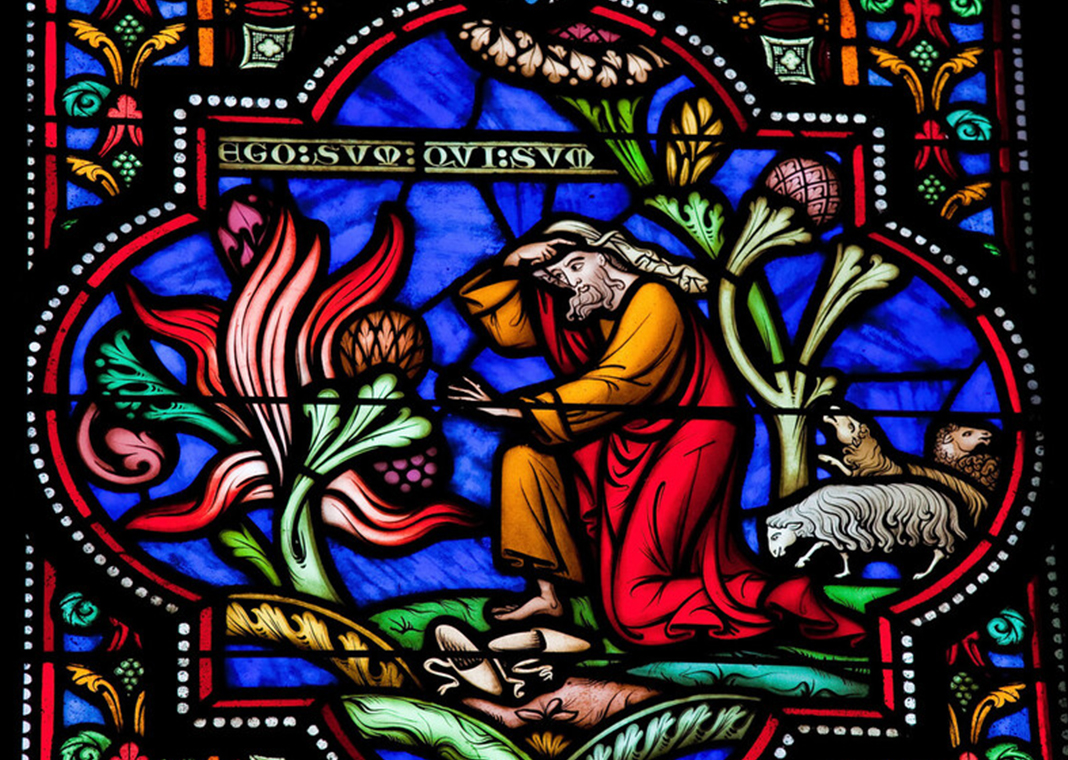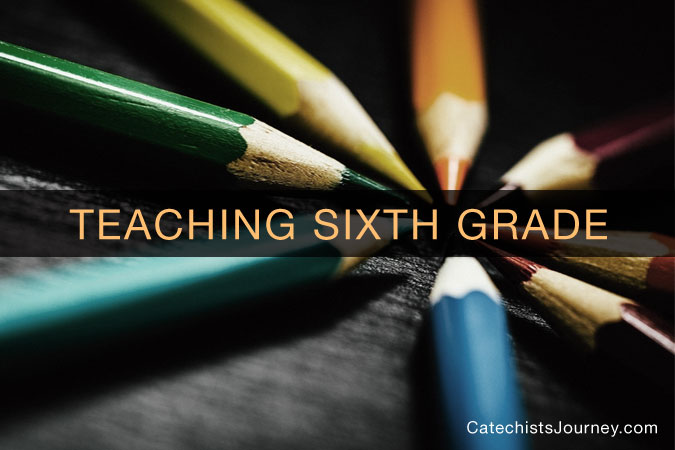
This is the third article in a series about figures in Salvation history and their relevance for catechists.
Moses’s name might conjure up images of Charlton Heston in The Ten Commandments or the 1998 animated film The Prince of Egypt. Moses’s life was so dramatic that it still inspires us today. His story is also part of our Salvation History. Through Moses, God saved his people. This tale is so important that it is retold each year at the Easter Vigil, when we celebrate how Jesus saved us through his Paschal Mystery.
Born into a family of Hebrew slaves in Egypt, Moses was adopted by Pharaoh’s daughter. (Exodus 2:1–10) Spared a life of slavery, he grew up in the royal court. Upon witnessing an Egyptian overseer abuse a Hebrew slave, Moses killed the Egyptian. The crime was discovered and Moses fled. (Exodus 2:11–15) He took refuge in Midian, married Zipporah, the daughter of Jethro, and settled down into life as a shepherd. However, he was not allowed to remain undisturbed.
While herding sheep near Mount Horeb, Moses saw a bush on fire; he was amazed that the bush was not consumed by the flames. God called to him from the burning bush, “Moses! Moses!” Moses answered, “Here I am.” (Exodus 3:4) God commanded Moses to return to Egypt to free his people from slavery. Moses reluctantly obeyed. (Exodus 3:7–12)
Moses and his brother Aaron returned to Egypt and confronted Pharaoh, who repeatedly refused their request to release the Hebrew slaves. God sent a new plague to afflict the Egyptians every time Pharaoh refused: the river water turned to blood; Egypt was overwhelmed by frogs, gnats, and flies; all the livestock died; boils; hail; locusts; and darkness. Despite these plagues, Pharaoh refused to give in. (Exodus, Chapters 6–11)
Before the tenth and final plague, God instructed Moses to tell each Israelite family to kill, roast, and eat a yearling lamb and paint its blood on their doorpost. That night, the oldest child of every household in Egypt—including Pharaoh’s son—died, but the angel of death spared the Israelites because of the lamb’s blood. (Exodus 12:1–30) The Jewish people commemorate this event every year in the festival of Passover. When Jesus and his disciples celebrated the Last Supper, they were celebrating Passover. It was then that Jesus gave us our Eucharist. During the Mass, we refer to Jesus as the Lamb of God, because his Blood saves us from death to sin. This important connection between Jesus’ sacrifice and the Passover sacrifice is an important part of our faith for our students—and us—to understand.
Pharaoh finally relented and commanded the Israelites to depart Egypt. But Pharaoh changed his mind and sent his army after them. God, through Moses, parted the Red Sea, the Israelites crossed, and then the waters swallowed up the Egyptian army. The Israelites have been freed, and they began their long journey toward the Promised Land. (Exodus 13:17–14:31) Along the way, they learned the ways of God and, through Moses, they received the Ten Commandments.
Moses is a forerunner of Jesus. Just as Moses led the Israelites out of slavery in Egypt to the Promised Land, Jesus leads us out of slavery to sin and into the Kingdom of Heaven. Students can appreciate why Moses is one of God’s friends and an important figure in Salvation history. He is someone to whom we can all relate.




Concise salvation story and if the catechist would like details, the Bible is always available. Thank you.
These stories are very good for Catholics and their children. we will be using them in our RCIC class at St. Michael the Archangel Church in Hudson Fl.
Easy to learn and teach, thank you